Nvidia boosts Quake 2 RTX with brand new ray tracing features
A revitalised classic now looks even more stunning.
Quake 2 is over two decades old and yet the id Software classic is one of my favourite games of this year, radically re-invented from a visual perspective thanks to the ray traced remastering from Nvidia's Lightspeed Studios (based on original work by Christophe Schied). It's one of the most impressive examples of hardware-accelerated RT and thanks to the new 1.2 patch released a few days ago, a phenomenal game now looks a whole lot better.
One might think that Nvidia would simply move on from the Quake 2 project and concentrate efforts on the ray traced upgrades for other titles that are being worked on behind the scenes, but the improvements to the 1.2 upgrade are quite profound - and the most noticeable change comes from upgraded art assets. While the original Quake 2 RTX launch used physically-based variants of Quake 2 XP textures, not all of them appeared to receive the same level of love and attention. A key focus for the 1.2 upgrade has been to re-assess many material properties and get them looking just right.
Metal and how it interacts with lighting has changed immensely. The original release had metalwork that appeared to lack much in the way of specular properties, so even with the hyper-realistic path traced lighting, the material looked more like stone than metal. It's all change in 1.2, with art changes that dramatically change and improve many scenes. There are micro-level improvements too. For example, the original remaster's shotgun shells in ammo boxes use matte materials that show little differentiation between the box material and the shells themselves. Version 1.2 now sees individual cartridges exhibit metallic sheen and emphasise the coloured metals on the jacket.
The reworked textures also add more material diversity and variety to scenes, which in the launch version had many textures looking extremely similar in how light affects them. Alongside metals, glazed materials including various computer monitors in-game now support picture-in-picture security camera feed footage, replacing static textures from the original release. Naturally, these screens cast out their own light onto surrounding materials capable of reflecting them.
Another big change occurs with how glass rendering is achieved and it's now more accurate in several respects. Glass reflections are of a higher resolution, and the reflections themselves are more clean and stable. On top of those improvements, there is also the option to enable glass thickness that adds in a layer of refraction and reflection for the opposite side of the glass. With this you can see how the glass itself is not just an infinitely thin reflecting plane, but rather something with its own volume where light has to enter it and then leave it.
Additionally there are some extremely rare perfect mirrors now added into the game that support multiple recursive reflections. In such surfaces, you can see your reflection and the reflection of your reflection and so on and so forth - the so-called 'hall of mirrors' effect. It's not infinite though as this would scale infinitely in terms of GPU load, but there are up to eight levels of reflection and refraction you can choose from. Personally, I'd stick to 'two' to retain the most impact without unduly stressing the GPU.
Beyond glass, water rendering also gets a big upgrade - it has density now, meaning that it has the ability to absorb light. In older versions of Quake 2 RTX, this was not present, giving you perfect visibility underwater and a rather odd look where the water met other surfaces. Version 1.2 increases the appearance of depth thanks to 'underwater fog' and an offshoot of this upgrade is that light and shadow interact more precisely with volumetric light sources, so the classic 'volumetric light source obscured by a fan' trick now works underwater in Quake 2 RTX, where previously it did not.
The final artistic flourish I noticed was a change to the default level of detail bias for textures, so that textures further into the distance use their higher resolution version, yielding further detail but by and large, all of the new upgrades deliver an experience that looks sharper, possesses greater material variety and has punchier contrast - but there is a change in the way the game performs as a consequence.
Beyond audiovisual upgrades, version 1.2 also adds in new options like the ability to turn off the temporal anti-aliasing pass, leading to some extremely raw edges and a noisier look to the game for those who like that kind of thing. However, in my opinion, the best new option is dynamic resolution scaling, with the user now able to set a target frame-rate independent of refresh rate and v-sync. The options limit how low and how high the resolution can go in relation to your display display resolution. Testing out the difference on a mid-range GPU in the form of the RTX 2060 Super, I could set a target resolution of 1440p - and 60fps managed to perform better than just a straight 1080p, with the DRS managing to help keep the frame-rate even as the on-screen action switched up rapidly.
This feature is a great way to maximise resolution and the new visual features while running at similar frame-rates to the way you've already played the game. It also helps to lessen the blow of an increased performance requirement. In general play, my benchmarks revealed that version 1.2 loses 10 per cent of its frame-rate up against 1.1 - so overall, the game is now heavier, but better-looking in general and with options to help mitigate the additional load via the DRS mode.
All in all, this is a great update to the game and it makes me wonder about the future. We know the Lightspeed Studios are working on more ray traced remasters but what titles should we expect? I am also curious about why these upgrades to Quake 2 were made at all - are we looking at experimental work in improving the remastering process that will roll out to future games in the pipeline? Right now, we don't know but hopefully something will pop up at CES in January 2020. Perhaps one vision of the future can be seen by looking at the work of YouTube user Vect0R, who imported Half-Life assets into the Quake 2 RTX engine, with predictably transformative effects. Lightspeed has worked with Valve games before (porting PC code to Shield) so an official Half-Life RT remaster would be phenomenal, while the mind boggles at what a ray traced version of Portal could deliver. Hopefully we'll find out more soon.



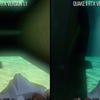
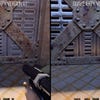

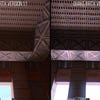

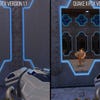
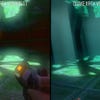


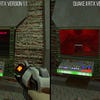

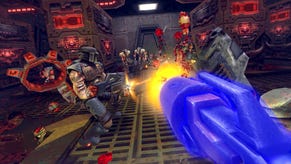













.jpg?width=291&height=164&fit=crop&quality=80&format=jpg&auto=webp)
_Rwmp6uD.jpg?width=291&height=164&fit=crop&quality=80&format=jpg&auto=webp)